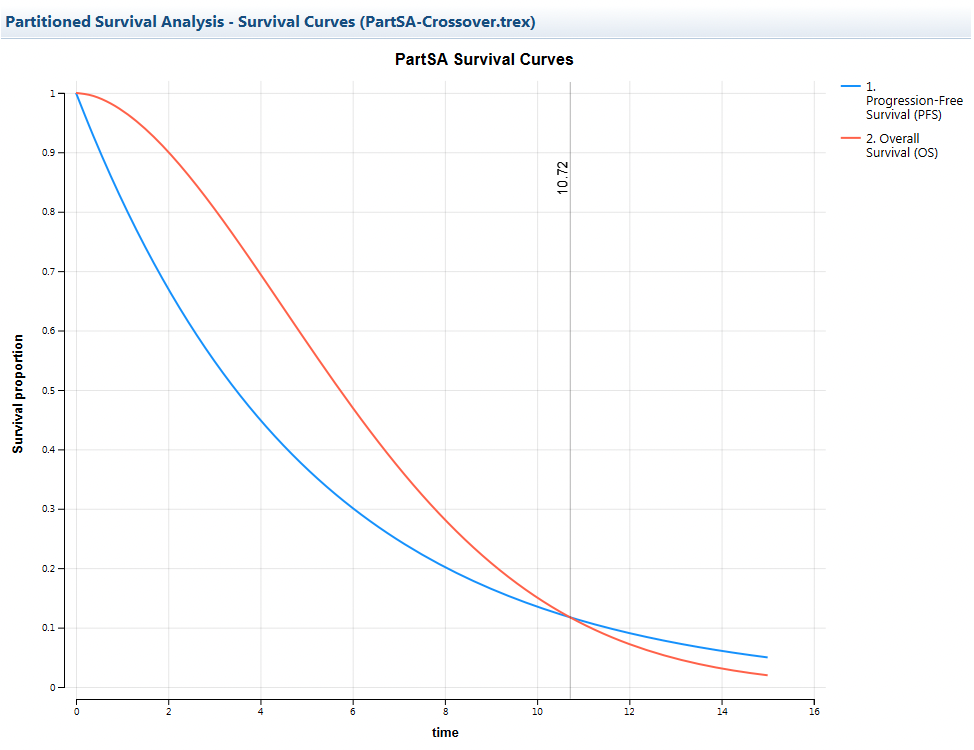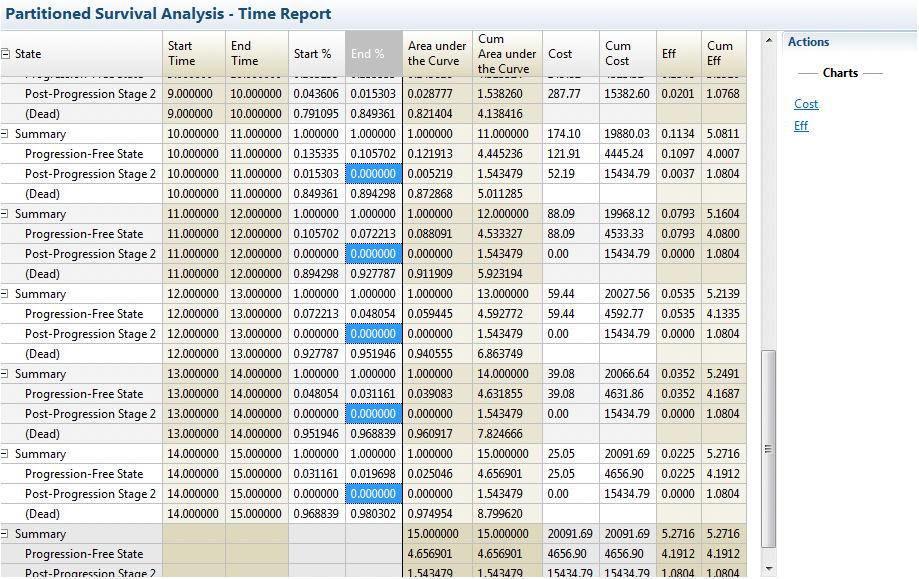38.11 Survival Curve Crossovers
Survival Curve nodes imply an order of progression from healthier to sicker states, ending in the implicit Dead state. The Survival Functions generally should not cross, but let's examine what happens when they do cross in the Partitioned Survival Analysis Example Model PartSA-Crossover.trex. The Survival Curve graph for that model is shown below.

The graph shows the Overall Survival crosses over the Progression-Free Survival curve at time 10.719. This is actually impossible as you cannot have part of the cohort in the PFS state and dead at the same time.
If you don't want to see the dotted veritcal line indicating where the crossover occurs, select the option to the right of the graph to Hide Crossover Line.
At this point, you would probably want to examine your survival analysis to see if you have parameterized the Survival Functions appropriately. However, if you have a very small crossover, you can choose to ignore it and treat the OS survival curve as primary. What this means is that membership in the PFS state would be cutoff by the OS curve and no one would be in the PPS state from time 10.71 to time 15 (end of time horizon).
To allow for small crossovers, there is an option in the PartSA View with the PartSA node selected.

If you select the option Stop Analysis, then the analysis will not continue when the crossover is found. However, if you select the option Push Downstream, the less healthy state will override the more health state for the crossover area. Let's examine some reporting output related to crossovers. Choose Analysis > Partitioned Survival Analysis > Crossover Report to see the impact of the crossover.

The report indicates that from time 10.712 to time 15, a portion of the area under the PFS Survival Curve was lost to the implicit Dead state because the OS curve crossed over and superceded the PFS Survival Curve. This resulted in a loss in cost of 94.16 and loss in effectiveness of 0.0847. If these adjustments are small enough, it may be reasonable to continue with the analysis results as adjusted above.
A secondary result of this adjustment is that there will be no one in the Post-Progression state after the crossover time as seen in the time report below.

